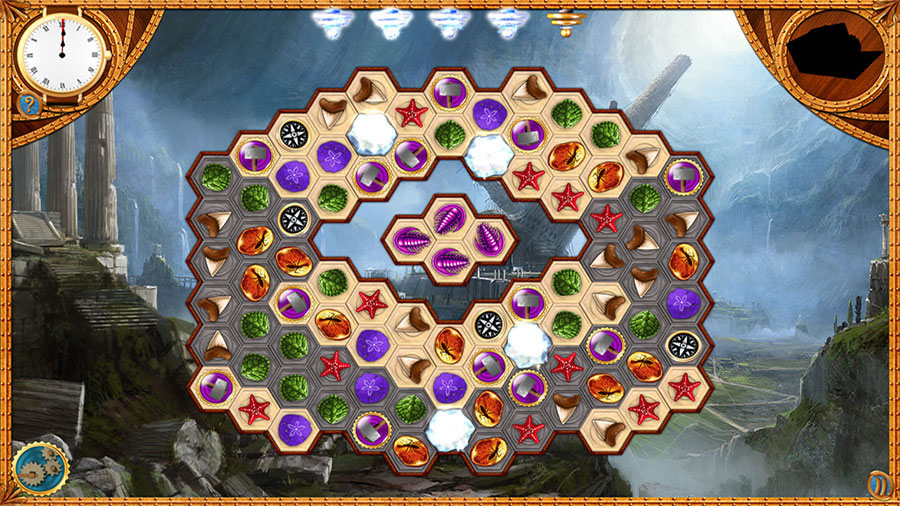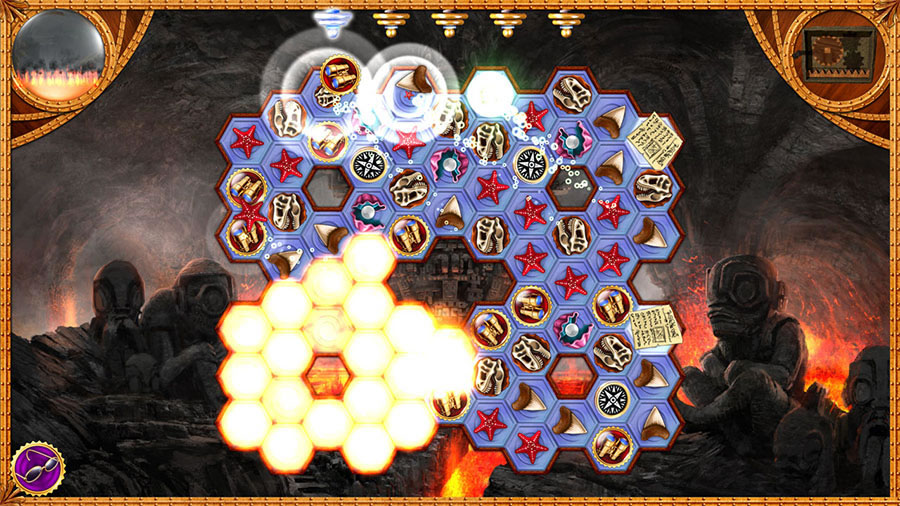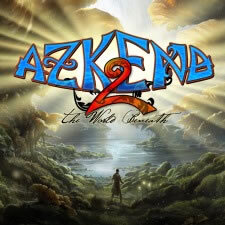- CLASSIC MAGAZINES
- REVIEW CREW
A show recapping what critics thought back
when classic games first came out! - NEXT GENERATION'S BEST & WORST
From the worst 1-star reviews to the best
5-stars can offer, this is Next Generation! - NINTENDO POWER (ARCHIVE)
Experience a variety of shows looking at the
often baffling history of Nintendo Power! - MAGAZINE RETROSPECTIVE
We're looking at the absolutely true history of
some of the most iconic game magazines ever! - SUPER PLAY'S TOP 600
The longest and most ambitious Super NES
countdown on the internet! - THEY SAID WHAT?
Debunking predictions and gossip found
in classic video game magazines! - NEXT GENERATION UNCOVERED
Cyril is back in this spin-off series, featuring the
cover critic review the art of Next Generation! - HARDCORE GAMER MAGAZING (PDF ISSUES)
Download all 36 issues of Hardcore Gamer
Magazine and relive the fun in PDF form!
- REVIEW CREW
- ELECTRONIC GAMING MONTHLY
- ELECTRONIC GAMING MONTHLY RANKS
From Mario to Sonic to Street Fighter, EGM
ranks classic game franchises and consoles! - ELECTRONIC GAMING MONTHLY BEST & WORST
Counting down EGM’s best and worst reviews
going year by year, from 1989 – 2009! - ELECTRONIC GAMING BEST & WORST AWARDS
11-part video series chronicling the ups and
downs of EGM’s Best & Worst Awards!
- ELECTRONIC GAMING MONTHLY RANKS
- GAME HISTORY
- GAME OVER: STORY BREAKDOWNS
Long-running series breaking down game
stories and analyzing their endings! - A BRIEF HISTORY OF GAMING w/ [NAME HERE]
Real history presented in a fun and pithy
format from a variety of game historians! - THE BLACK SHEEP
A series looking back at the black sheep
entries in popular game franchises! - INSTANT EXPERT
Everything you could possibly want to know
about a wide variety of gaming topics! - FREEZE FRAME
When something familiar happens in the games
industry, we're there to take a picture! - I'VE GOT YOUR NUMBER
Learn real video game history through a series
of number-themed episodes, starting at zero! - GREAT MOMENTS IN BAD ACTING
A joyous celebration of some of gaming's
absolute worst voice acting!
- GAME OVER: STORY BREAKDOWNS
- POPULAR SHOWS
- DG NEWS w/ LORNE RISELEY
Newsman Lorne Riseley hosts a regular
series looking at the hottest gaming news! - REVIEW REWIND
Cyril replays a game he reviewed 10+ years
ago to see if he got it right or wrong! - ON-RUNNING FEUDS
Defunct Games' longest-running show, with
editorials, observations and other fun oddities! - DEFUNCT GAMES QUIZ (ARCHIVE)
From online quizzes to game shows, we're
putting your video game knowledge to the test!- QUIZ: ONLINE PASS
Take a weekly quiz to see how well you know
the news and current gaming events! - QUIZ: KNOW THE GAME
One-on-one quiz show where contestants
find out if they actually know classic games! - QUIZ: THE LEADERBOARD
Can you guess the game based on the classic
review? Find out with The Leaderboard!
- QUIZ: ONLINE PASS
- DEFUNCT GAMES VS.
Cyril and the Defunct Games staff isn't afraid
to choose their favorite games and more! - CYRIL READS WORLDS OF POWER
Defunct Games recreates classic game
novelizations through the audio book format!
- DG NEWS w/ LORNE RISELEY
- COMEDY
- GAME EXPECTANCY
How long will your favorite hero live? We crunch
the numbers in this series about dying! - VIDEO GAME ADVICE
Famous game characters answer real personal
advice questions with a humorous slant! - FAKE GAMES: GUERILLA SCRAPBOOK
A long-running series about fake games and
the people who love them (covers included)! - WORST GAME EVER
A contest that attempts to create the worst
video game ever made, complete with covers! - LEVEL 1 STORIES
Literature based on the first stages of some
of your favorite classic video games! - THE COVER CRITIC
One of Defunct Games' earliest shows, Cover
Critic digs up some of the worst box art ever! - COMMERCIAL BREAK
Take a trip through some of the best and
worst video game advertisements of all time! - COMIC BOOK MODS
You've never seen comics like this before.
A curious mix of rewritten video game comics!
- GAME EXPECTANCY
- SERIES ARCHIVE
- NINTENDO SWITCH ONLINE ARCHIVE
A regularly-updated list of every Nintendo
Switch Online release, plus links to review! - PLAYSTATION PLUS CLASSIC ARCHIVE
A comprehensive list of every PlayStation
Plus classic release, including links! - RETRO-BIT PUBLISHING ARCHIVE
A regularly-updated list of every Retro-Bit
game released! - REVIEW MARATHONS w/ ADAM WALLACE
Join critic Adam Wallace as he takes us on a
classic review marathon with different themes!- DEFUNCT GAMES GOLF CLUB
Adam Wallace takes to the links to slice his way
through 72 classic golf game reviews! - 007 IN PIXELS
Adam Wallace takes on the world's greatest spy
as he reviews 15 weeks of James Bond games! - A SALUTE TO VAMPIRES
Adam Wallace is sinking his teeth into a series
covering Castlevania, BloodRayne and more! - CAPCOM'S CURSE
Adam Wallace is celebrating 13 days of Halloween
with a line-up of Capcom's scariest games! - THE FALL OF SUPERMAN
Adam Wallace is a man of steel for playing
some of the absolute worst Superman games! - THE 31 GAMES OF HALLOWEEN
Adam Wallace spends every day of October afraid
as he reviews some of the scariest games ever! - 12 WEEKS OF STAR TREK
Adam Wallace boldly goes where no critic has
gone before in this Star Trek marathon!
- DEFUNCT GAMES GOLF CLUB
- DAYS OF CHRISTMAS (ARCHIVE)
Annual holiday series with themed-episodes
that date all the way back to 2001!- 2015: 30 Ridiculous Retro Rumors
- 2014: 29 Magazines of Christmas
- 2013: 29 Questionable Power-Ups of Christmas
- 2012: 34 Theme Songs of Christmas
- 2011: 32 Game Endings of Christmas
- 2010: 31 Bonus Levels of Christmas
- 2009: 30 Genres of Christmas
- 2008: 29 Controls of Christmas
- 2007: 34 Cliches of Christmas
- 2006: 33 Consoles of Christmas
- 2005: 32 Articles of Christmas
- 2004: 31 Websites of Christmas
- 2003: 29 Issues of Christmas
- 2002: 28 Years of Christmas
- 2001: 33 Days of Christmas
- NINTENDO SWITCH ONLINE ARCHIVE
- REVIEW ARCHIVE
- FULL ARCHIVE
Azkend 2: The World Beneath
Like a lot of people, I've had my dalliances with the match-three puzzle genre. What started with me innocently experimenting with Bejeweled quickly spiraled into an out-of-control Puzzle Quest addiction. But as I built up a tolerance for that style of game, I found that the sequels and spin-offs failed to recapture the magic. Azkend 2: The World Beneath may not reinvent the match-three formula, but it does a great job of reminding me why I liked matching things in the first place.
The sequel to the 2010 mobile phone game, this take on the genre merges the match-three gameplay with a compelling story that mimics the work of Jules Verne. We follow a 19th century adventurer traveling from Liverpool to New York who gets caught up in a wild storm that sends their boat wildly off course. This results in an epic adventure where we discover the many secrets hidden inside the belly of the earth.
After each story beat, we're tasked with assembling a number of useful items, like a compass, binoculars, camera and so on. Simply put, each collectable is split up into several pieces, and it up to you to complete the various puzzles to put them back together. Once you've done that, you'll search the area for clues and move on to the next chapter.
The puzzles are presented as a large grid of hexagonal tiles, each made up of different images that are looking to get matched up. The goal for most puzzles is to keep matching pictures until every tile is colored blue, all before time runs out. Once you've colored the entire board, you'll collect the piece you need and move on to the next puzzle.
When not coloring the board blue, players will have to figure out several other types of puzzles. Sometimes there will be bugs that slowly climb to the top of the grid, while other times some of the tiles will be locked behind ice and other objects. There are also puzzles that give you no room for error, forcing a perfect run to win the prize. You'll rotate through these various types of modes for more than sixty stages.
 Click For the Full Picture Archive
Click For the Full Picture ArchiveIt's the large variety of special items and abilities that makes all the difference. You don't just piece together binoculars; you actually get to use them. Each item you craft will have a noticeable effect on the way the puzzles plays out. For example, the explosives will destroy nearby items, the wind sail will summon high winds that sweep away pieces and the hammer spawns, well, a hammer. Some items are more interesting than others.
The gameplay is quick and intuitive, even if it's not very original or deep. After initially laughing at how simple the concept felt, I was surprised by how invested I was in the story and the unique wrinkles to the gameplay. It's fast-paced enough to make me completely forget that I'm largely doing the same thing from one stage to the next. The game does just enough to keep pulling me through all of its different locations.
Unfortunately, when you're not taking in the story and matching tiles, the game has you attempting to track down clues in a completely out-of-place mini-game. Instead of seeing a giant grid, we're presented with a gorgeously detailed picture of our currently location. The viewfinder will show a small portion of the image, and it's our job to point to the spot in question. But look out, because pointing at the wrong part of the picture will result in a time penalty. I see what they were going for in this mode, but it never fit in with the rest of the game.
 Click For the Full Picture Archive
Click For the Full Picture ArchiveThere came a point in our travels when Azkend 2 started to lose me. Not only was I growing wary of the repetition, but the obstacles were becoming more frustrating than fun. I kept running into aggressive insects that would rush the top before I had a chance to react, and too many puzzles end up getting rearranged because I ran out of available moves. These issues only got more annoying as the game neared its conclusion, ultimately leaving me let down by the journey.
Speaking of being let down, I found it nearly impossible to go from the PS Vita's touch screen to using an analog stick on the PlayStation 4. This is a game built for quick swipes, so it's hard to get used to the slower pace on PS4. Azkend 2 does attempt to split the difference with the DualShock 4's touch pad, but it's not a very good alternative.
But even though it never quite reaches the same levels as Journey to the Center of the Earth or even Twenty Thousand Leagues Under the Sea, Azkend 2: The World Beneath does manage to mix a compelling story with addictive match-three gameplay. It's not especially deep or original, but, for a brief moment, this sequel reminded me of why I liked this genre in the first place.
HOME |
CONTACT |
NOW HIRING |
WHAT IS DEFUNCT GAMES? |
NINTENDO SWITCH ONLINE |
RETRO-BIT PUBLISHING
Retro-Bit |
Switch Planet |
The Halcyon Show |
Same Name, Different Game |
Dragnix |
Press the Buttons
Game Zone Online | Hardcore Gamer | The Dreamcast Junkyard | Video Game Blogger
Dr Strife | Games For Lunch | Mondo Cool Cast | Boxed Pixels | Sega CD Universe | Gaming Trend
Game Zone Online | Hardcore Gamer | The Dreamcast Junkyard | Video Game Blogger
Dr Strife | Games For Lunch | Mondo Cool Cast | Boxed Pixels | Sega CD Universe | Gaming Trend
Copyright © 2001-2025 Defunct Games
All rights reserved. All trademarks are properties of their respective owners.
All rights reserved. All trademarks are properties of their respective owners.





























